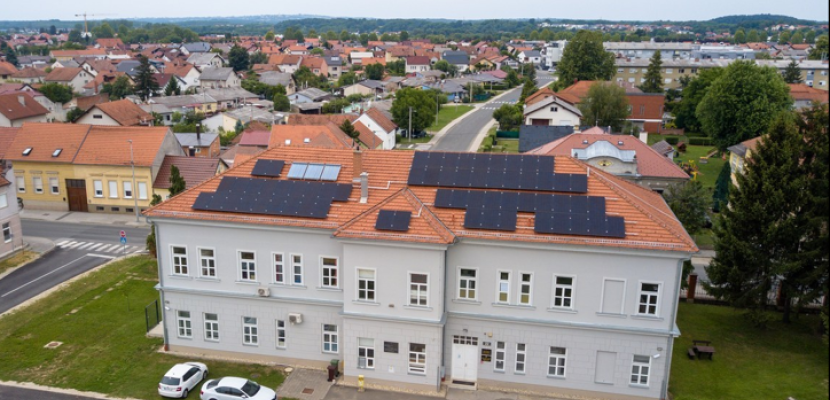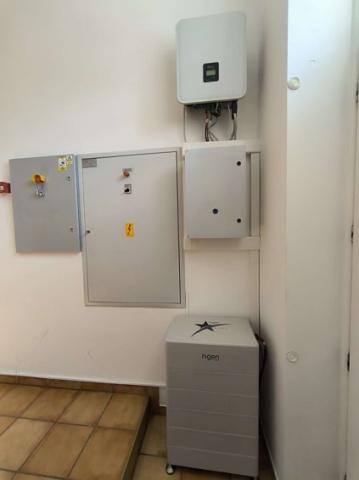
Energy efficient administrative building in Čakovec

About this good practice
The administrative building, one of the oldest in Međimurje County is now among the most energy-efficient buildings in the region. Three public institutions have their offices in it: MENEA, REDEA and MIN. In 2018, REDEA and MENEA began transforming this old, inefficient building into a demonstration site for energy sustainability. Starting from the project co-financed by the Environmental protection and energy efficiency Fund we changed the heating source from old closed (distric) gas heating system to pyrolysis wood furnace (75 kW). Further improvements came through the RURES project, which introduced renewable energy solutions by installing:
-A solar collector system for hot water and heating support.
-An indoor lighting system with sensors.
-A smart metering system for all energy sources, featuring a digital info board.
-Energy-efficient kitchen appliances.
The next step was to further implement renewable solutions, so our partner MENEA integrated heating and cooling system using a heat pump in the whole building, installed PV power plant (19kW) and EV charging station. Third phase was to address one of the key challenges in modern energy technology – managing the imbalance between generated power and the load in the electrical grid. Through the project ESINERGY, battery energy storage system (24 kWh) was installed. The main goal of this system is to reduce the peak loads from the distribution grid and to serve as a storage for excess energy.
Expert opinion
Resources needed
The first Environmental Fund investment was €29,442.30, while the RURES pilot investment was €30,030.13. National funds financed a PV plant, EV charger, and heat pump with €113,791.30. The ESINERGY pilot investment was contracted for €35,246.54.
Evidence of success
Before the installation of RES measures, the building consumed approx. 29,000 kWh of electricity and 86,000 kWh of gas annually, resulting in emissions of 23 tCO2/year. In 2023., with the new measures, the building consumed 80% less electricity from the network,56% less gas, and 50,000 kWh of firewood. Through this transition to green energy, the carbon footprint has been reduced by 12.5 tCO2/year.
Potential for learning or transfer
Refurbishing of public buildings in order for them to become more energy efficient is an activity that is current especially in the countries of former Eastern European block (ex-communist countries) where many buildings were built in the 60’s and 70’s showcases the effective transformation of an old building into an energy-efficient, sustainable structure, offering valuable lessons for other regions or institutions with similar historical buildings. Key takeaways include: The integration of renewable energy solutions to reduce environmental impact; Practical approaches to energy efficiency, such as smart metering; The financial and technical benefits of public-private collaboration for sustainability; The reduction of energy costs and carbon footprint.This project highlights the importance of long-term planning and phased implementation to achieve energy sustainability, making it a valuable reference for similar initiatives in other regions or sectors.
Further information
Images


